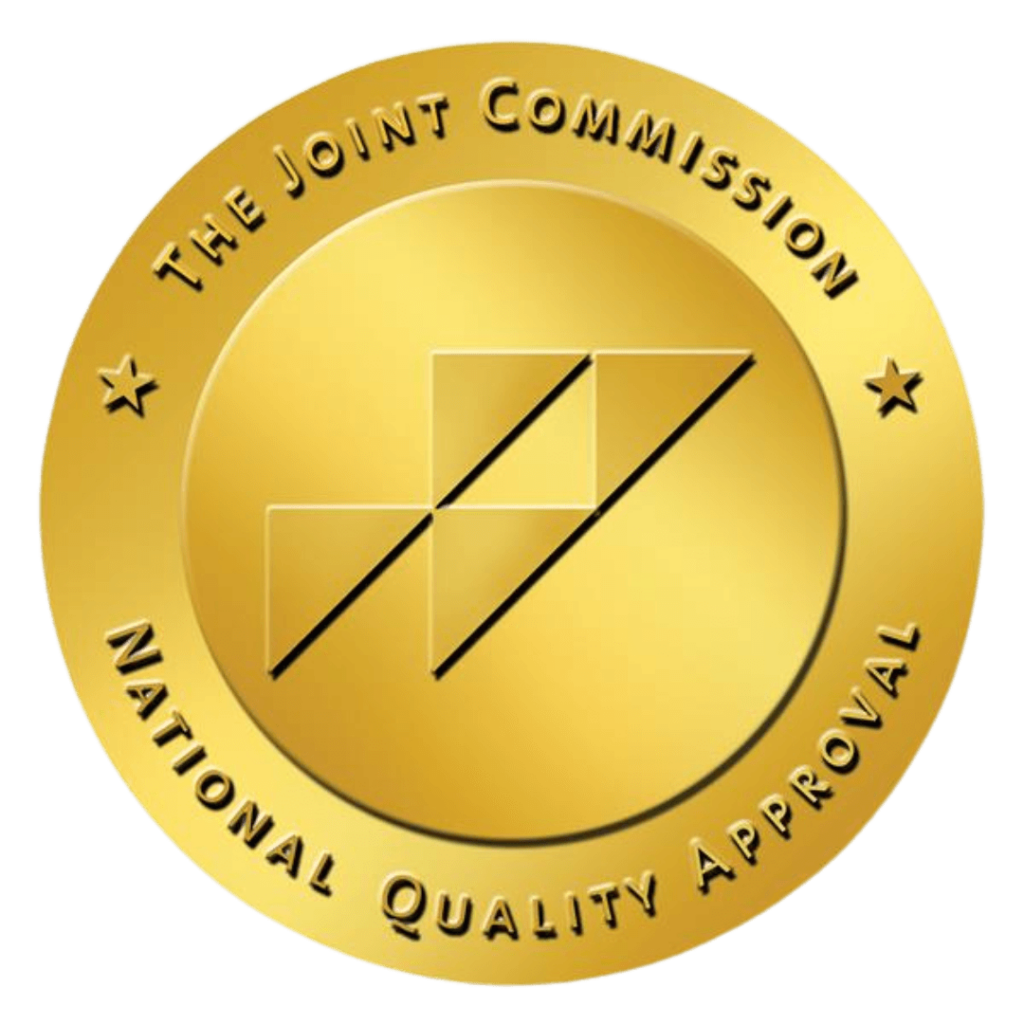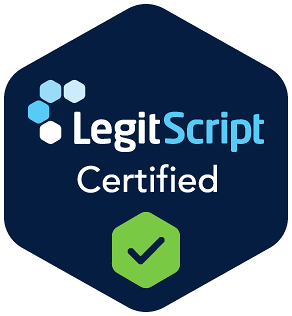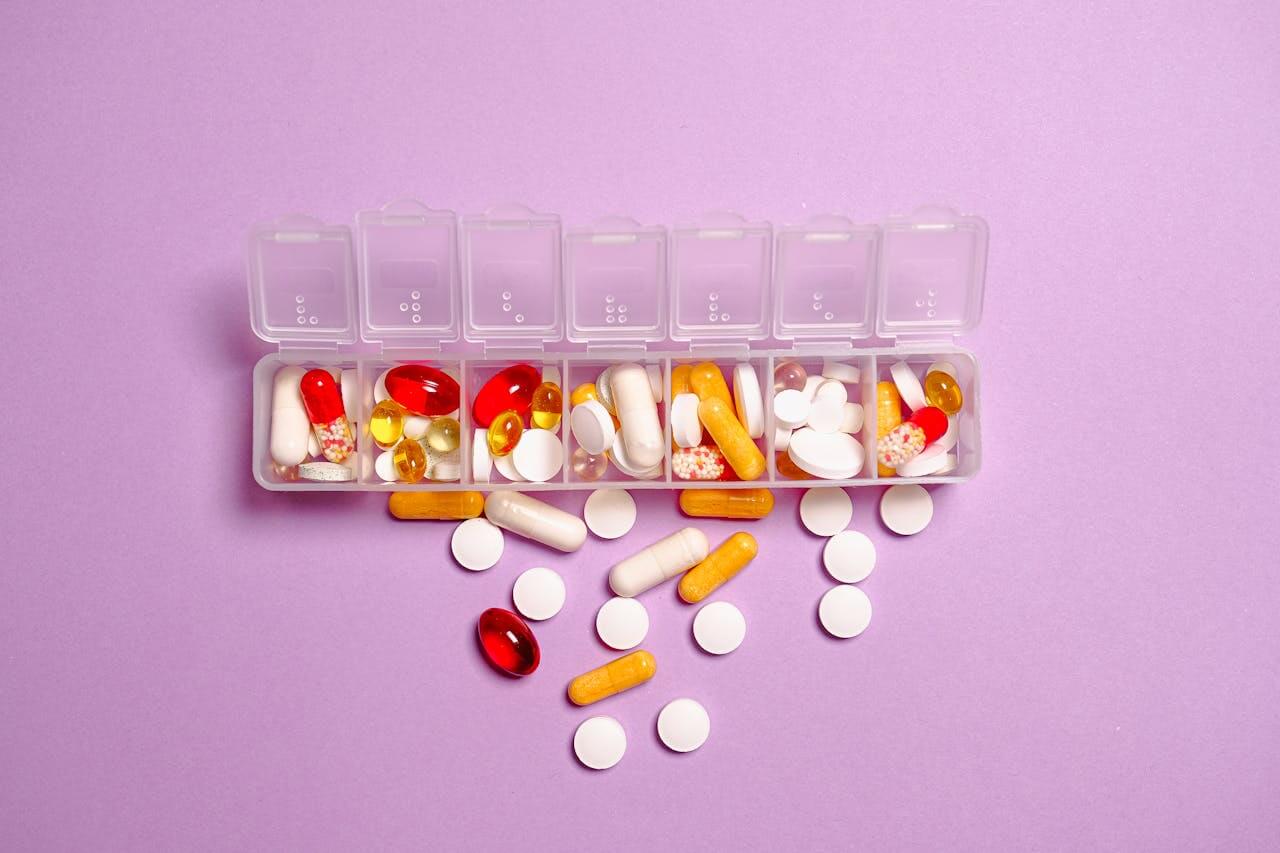
Prescription drugs are intended to treat specific health conditions and are formulated to be safe and effective when taken as prescribed. However, prescription drug abuse still happens. This leads to serious health risks when higher doses are taken, or when used for non-medical purposes. For these reasons, it’s crucial to follow prescription guidelines carefully.
In the United States, abuse of prescription drugs is a growing problem, affecting individuals of all ages. Young adults often choose prescription stimulants for better focus and energy, while older people go for opioid painkillers.
Addressing this issue requires a comprehensive approach, and it starts with drawing the line between the usage of a prescribed drug and drug abuse.
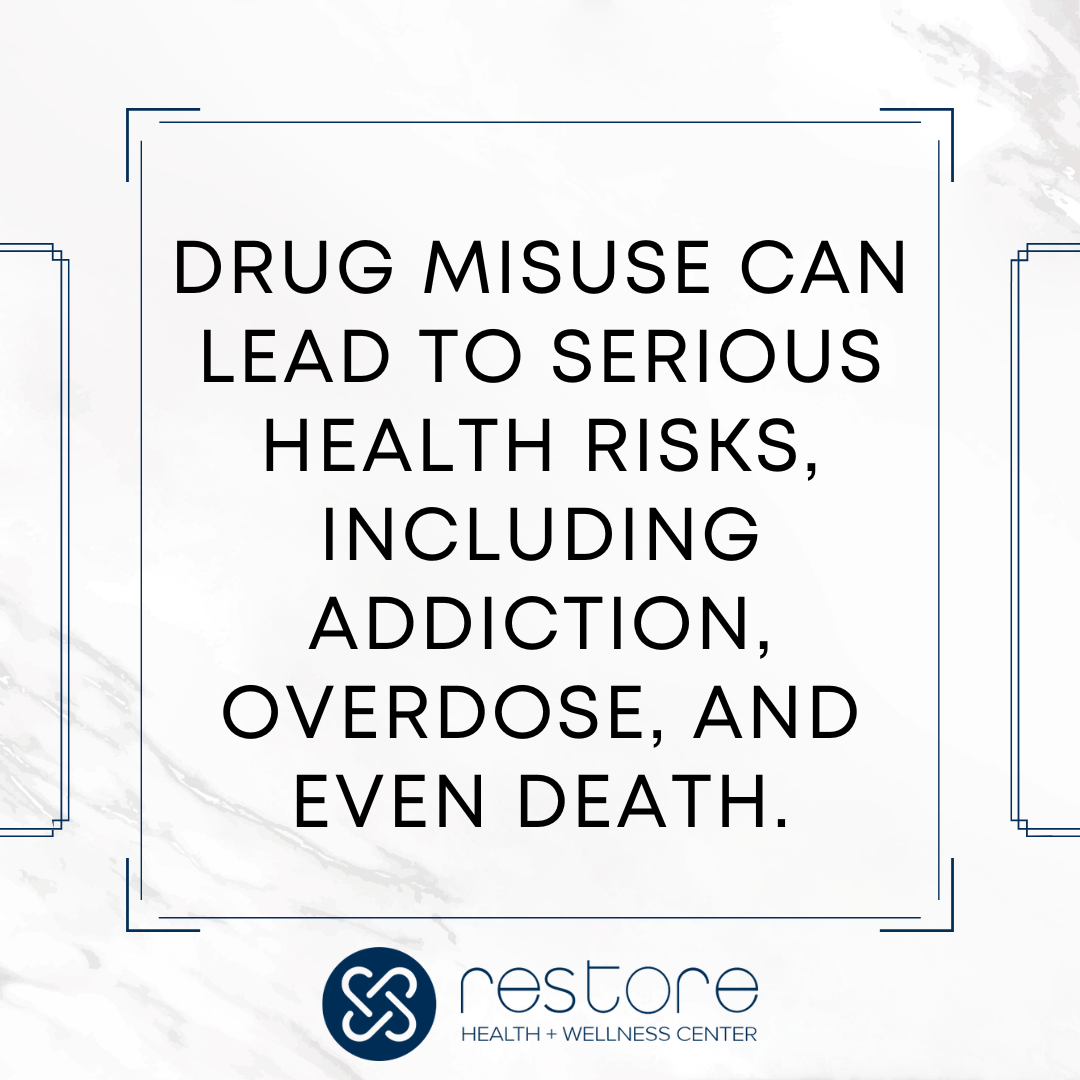
The Thin Line Between Use and Abuse
Prescription drugs are potent medications designed to treat specific health conditions when used appropriately under the guidance of a healthcare professional. This ensures that the medication is effective in treating the intended condition while minimizing the risk of side effects or complications.
Substance abuse, on the other hand, involves taking medication in a manner or dose other than prescribed. This includes the following:
- taking someone else’s prescription,
- taking the medication to get high, or
- taking it in a way other than how it was intended (e.g., crushing pills to snort or inject them).
This misuse can lead to serious health risks, including addiction, overdose, and even death. It’s important to understand the distinction between using prescription drugs responsibly and abusing them for nonmedical reasons.
According to the National Center for Drug Abuse Statistics (NCDAS), in the course of their lives, 52 million people in the United States who are over the age of 12 have intentionally abused prescription medicines at least once. This alarming statistic highlights the prevalence of prescription drug misuse and the importance of education, prevention, and access to treatment to address this growing issue.
Understanding Addiction
Addiction is a complex disease that affects both the brain and behavior. It is often characterized by an individual’s inability to control their use of a substance or engage in a behavior despite negative consequences. It is often associated with drug and alcohol use, but it can also manifest in other forms, such as gambling, gaming, or even shopping.
The progression from substance use to addiction follows a pattern. Initially, an individual may experiment with a substance or behavior, finding it pleasurable or relieving stress. As use continues, tolerance may develop, leading to the need for higher doses or more frequent engagement to achieve the same effects. Stimulants alter the brain’s reward system over time, which causes cravings and a compulsive need for the substance or behavior, even in the face of negative consequences.
This uncontrollable urge can have devastating effects on a person’s life, impacting their relationships, work, and physical and mental health. Understanding addiction as a disease rather than a moral failing is crucial for developing effective prevention and treatment strategies, as it allows for a more compassionate and supportive approach to helping those struggling with addiction.
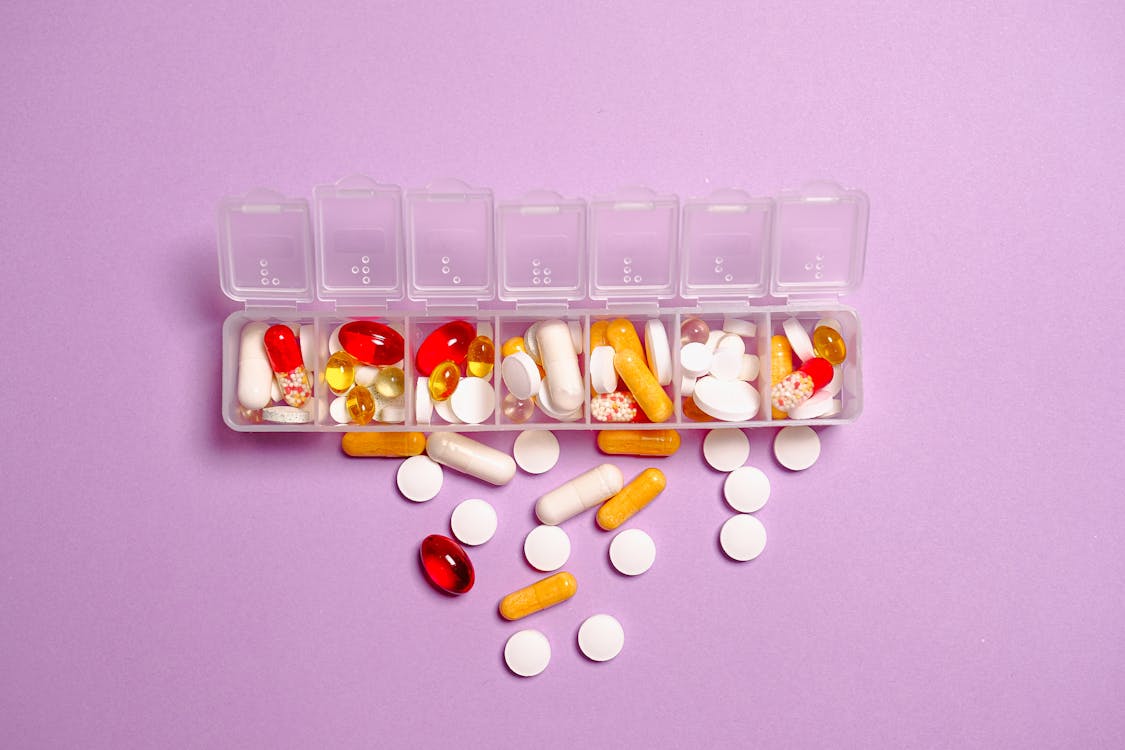
Warning Signs of Addiction
Recognizing the warning signs of addiction is important for early intervention and support. Oftentimes, changes in behavior, mood swings, and neglect of responsibilities can indicate a problem. Here are some of the specific things one can observe from those who are suffering from addiction:
- Eyes that are bloodshot, with pupils that are more or less than usual.
- Any shifts in eating habits or sleeping habits.
- A decline in one’s personal grooming habits and one’s physical appearance, respectively.
- A runny nose or a sniffing sound.
- Weight loss or growth that occurs all of a sudden.
- Tremors, slurred speech, or decreased coordination.
When you observe these signs in a friend or loved one, do not shy away from opening your mobile phone and typing “addiction treatment near me” on your search tab to help them get an assessment.
Causes and Risk Factors for Prescription Drug Addiction
Understanding the causes and risk factors involved in the abuse of prescription drugs is equally important. These factors can increase the likelihood of developing an addiction:
- genetic predisposition,
- a history of substance abuse, and
- underlying mental health conditions
Additionally, environmental influences, such as easy access to prescription drugs, can play a significant role.
Who is At Risk?
Several factors can increase an individual’s risk of developing drug addiction, including the following:
- Prior addiction to alcohol, tobacco, or other drugs. People with a history of substance abuse are more likely to develop an addiction to prescription drugs, as they may have a higher tolerance for the effects of these substances and a greater propensity for compulsive drug-seeking behavior.
- Family history. Genetics can predispose individuals to addiction, making them more susceptible to developing substance use disorders.
- Young adult age. The group is particularly vulnerable to addiction due to various age-related factors. Peer pressure, curiosity, and a desire for experimentation can lead to substance abuse. Additionally, young adults’ brains are still developing, making them more impulsive and less able to assess risks, which can contribute to drug-seeking behavior.
- Mental health conditions. Individuals with conditions such as anxiety, depression, or post-traumatic stress disorder (PTSD) may use prescription drugs to self-medicate, leading to dependence and addiction.
- Access to prescription drugs. Easy access, whether through legitimate prescriptions or illicit means, can increase the likelihood of misuse and abuse. Individuals with access to prescription drugs may be more inclined to use them recreationally or experimentally, increasing their risk of developing an addiction.
Recognizing these signs and risk factors can help individuals and their loved ones take proactive steps to address and prevent prescription drug addiction.
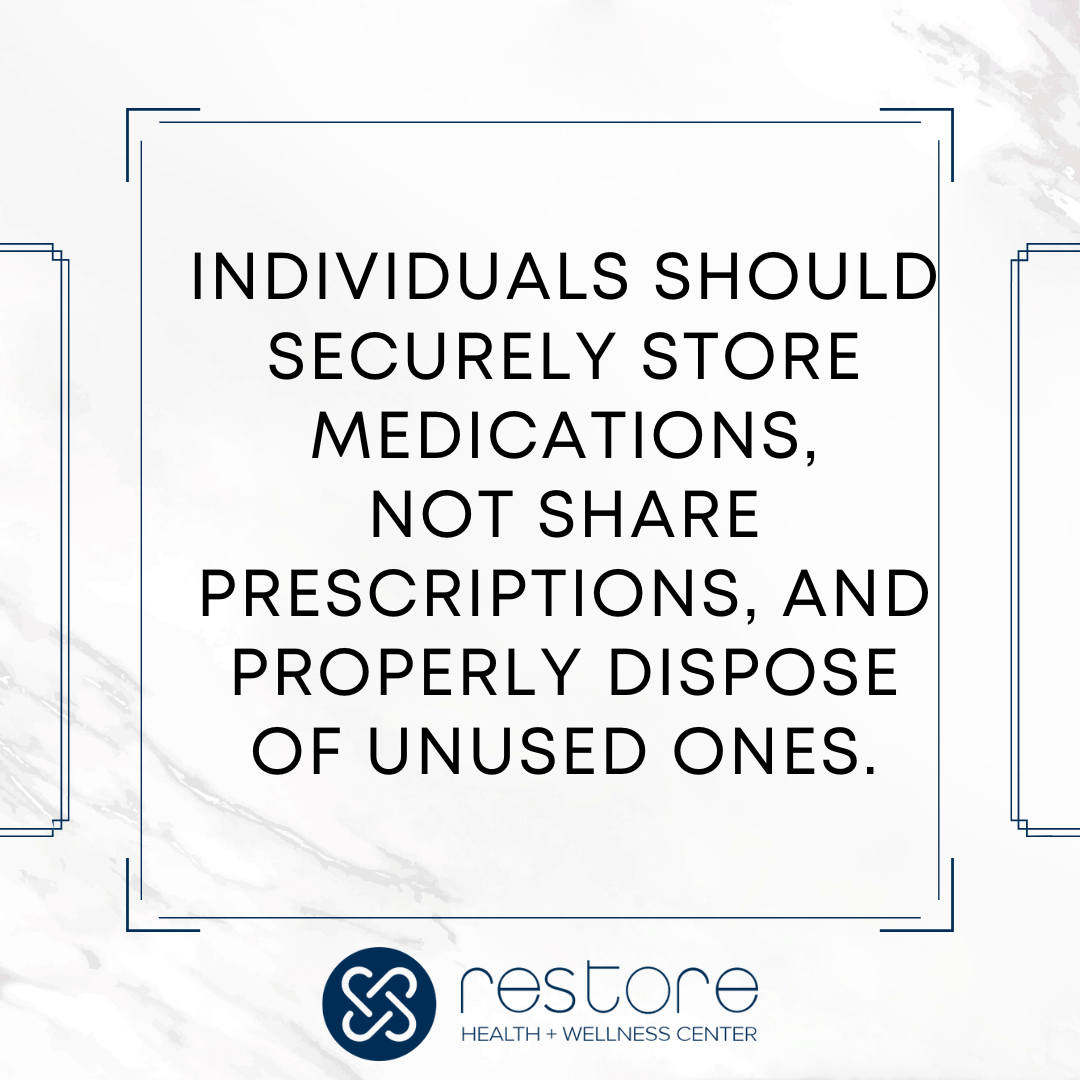
Preventive Measures to Lower Your Risk
Preventive measures can reduce the risk of prescription drug abuse. Proper education about the risks associated with prescription drugs, including their addictive potential and proper use can be helpful. Healthcare providers should carefully monitor prescriptions, ensuring that they are appropriate and necessary.
Additionally, individuals can take proactive steps, such as securely storing medications, not sharing prescriptions, and properly disposing of unused medications.
Another key preventive measure is promoting alternative pain management strategies, such as:
- physical therapy or non-opioid medications
- increasing access to mental health services
For those already struggling with addiction, residential addiction treatment can provide intensive, holistic care to support recovery and prevent relapse.

Conclusion
Abuse of prescription drugs is a significant issue affecting individuals of all ages. Prevention efforts, including education, proper medication management, and access to mental health services, are necessary to lower the risk of substance abuse and promote healthier outcomes.
In need of a rehab center that addresses prescription drug abuse? Restore Treatment Center is here to help you. Contact us today to get started.


